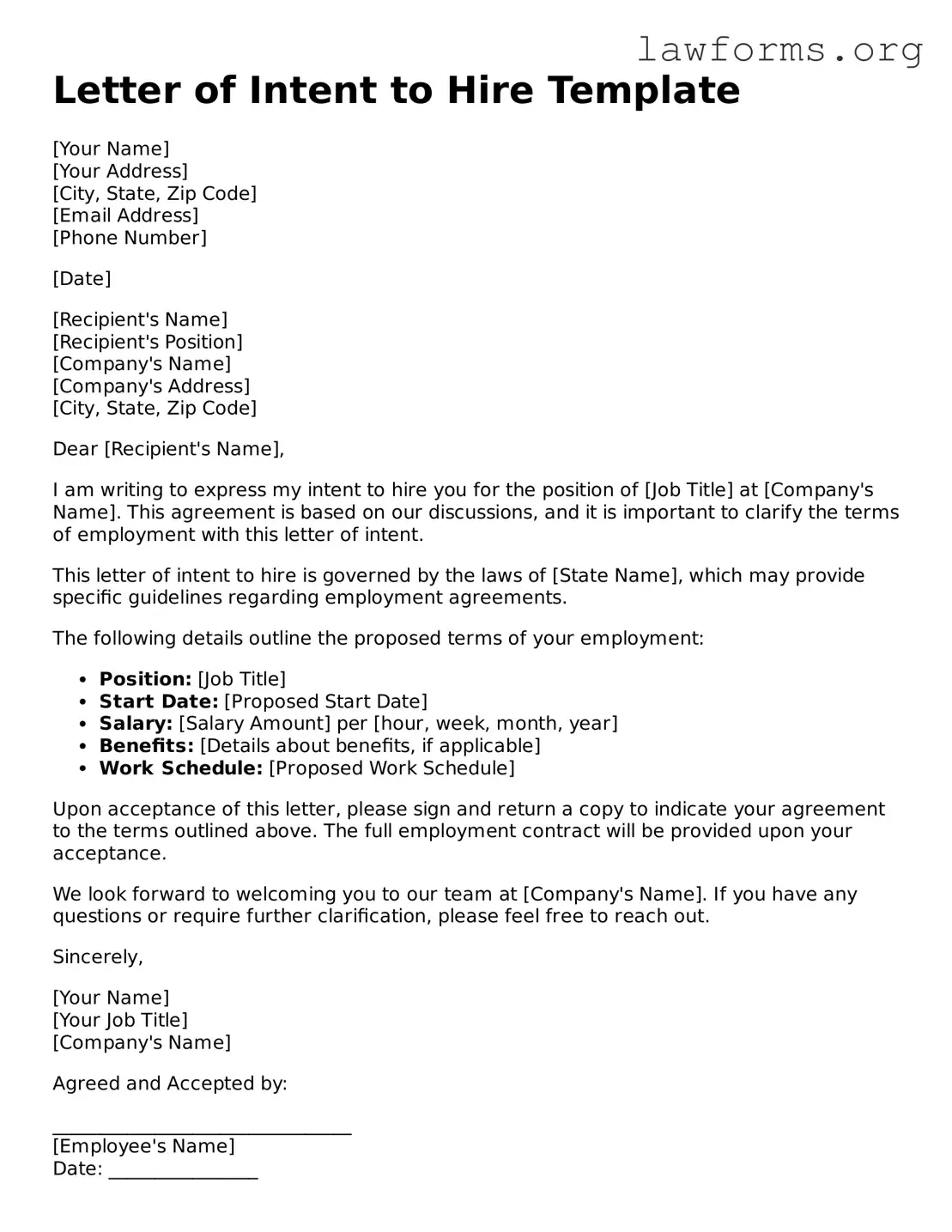Letter of Intent to Hire Template
[Your Name]
[Your Address]
[City, State, Zip Code]
[Email Address]
[Phone Number]
[Date]
[Recipient's Name]
[Recipient's Position]
[Company's Name]
[Company's Address]
[City, State, Zip Code]
Dear [Recipient's Name],
I am writing to express my intent to hire you for the position of [Job Title] at [Company's Name]. This agreement is based on our discussions, and it is important to clarify the terms of employment with this letter of intent.
This letter of intent to hire is governed by the laws of [State Name], which may provide specific guidelines regarding employment agreements.
The following details outline the proposed terms of your employment:
- Position: [Job Title]
- Start Date: [Proposed Start Date]
- Salary: [Salary Amount] per [hour, week, month, year]
- Benefits: [Details about benefits, if applicable]
- Work Schedule: [Proposed Work Schedule]
Upon acceptance of this letter, please sign and return a copy to indicate your agreement to the terms outlined above. The full employment contract will be provided upon your acceptance.
We look forward to welcoming you to our team at [Company's Name]. If you have any questions or require further clarification, please feel free to reach out.
Sincerely,
[Your Name]
[Your Job Title]
[Company's Name]
Agreed and Accepted by:
________________________________
[Employee's Name]
Date: ________________
